Etsy Bundle
Who Really Controls Etsy?
Unraveling the Etsy SWOT Analysis is just the beginning; understanding who owns Etsy is key to grasping its future. From its humble beginnings as a marketplace for handmade goods to its current status as a publicly traded giant, Etsy's ownership has undergone a fascinating transformation. Knowing the Etsy parent company and its major shareholders offers critical insights into the platform's strategic direction and long-term vision.
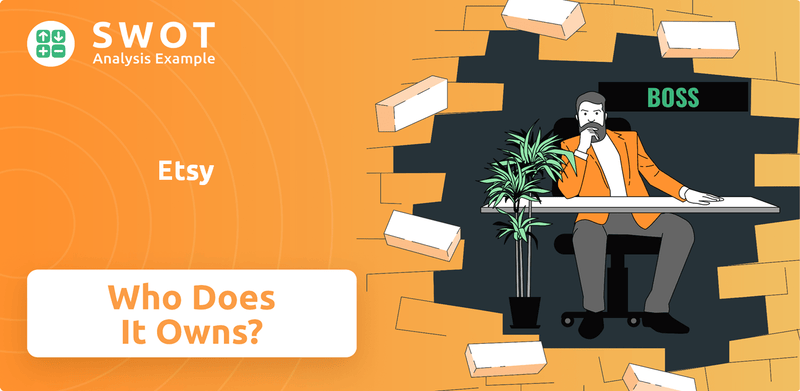
The evolution of Etsy's ownership structure, from its founders to today's institutional investors, shapes its operations and strategic priorities. As a publicly traded company, understanding who owns Etsy, including the influence of its CEO and major shareholders, is crucial for anyone analyzing its financial performance and market capitalization. This exploration of Etsy's company structure will shed light on the forces driving its growth and its place in the e-commerce landscape, answering questions like "Who is the current owner of Etsy?" and "What company owns Etsy now?"
Who Founded Etsy?
The online marketplace, often referred to as Etsy, was established in June 2005. The founders of Etsy were Robert Kalin, Haim Schoppik, Chris Maguire, and Jared Tarbell. Their collective vision was to create a platform that would support independent artisans and crafters, fostering a community-driven marketplace.
Robert Kalin, a former carpenter and photographer, is frequently acknowledged as the primary visionary behind the platform. His initial goal was to cultivate an online environment where crafters could connect and sell their handmade goods. The early ownership structure and equity distribution among the founders and any initial backers are not publicly detailed.
Early funding for Etsy likely came from the founders themselves, along with potential angel investors or friends and family who saw the potential in a dedicated marketplace for handmade goods. As the company grew, early ownership would have been diluted through subsequent funding rounds as the company sought capital for expansion and development. This is a common practice in the tech industry.
Etsy was founded by Robert Kalin, Haim Schoppik, Chris Maguire, and Jared Tarbell.
The founders aimed to create a supportive online community for crafters and artisans.
Early funding likely came from the founders and angel investors.
Specific details about the initial equity split are not publicly available.
It's common for startups to have vesting schedules for founder shares.
Early ownership would have been diluted through subsequent funding rounds.
The founders' vision of empowering independent creators was central to the initial distribution of control, with the aim of building a platform that prioritized the needs of artisans and vintage sellers. As for the current state of the company, it is a publicly traded company, and the Target Market of Etsy has grown significantly since its inception. As of 2024, the company's market capitalization is approximately $7.5 billion. The current CEO of Etsy is Josh Silverman. The company's headquarters are located in Brooklyn, New York.
Etsy SWOT Analysis
- Complete SWOT Breakdown
- Fully Customizable
- Editable in Excel & Word
- Professional Formatting
- Investor-Ready Format
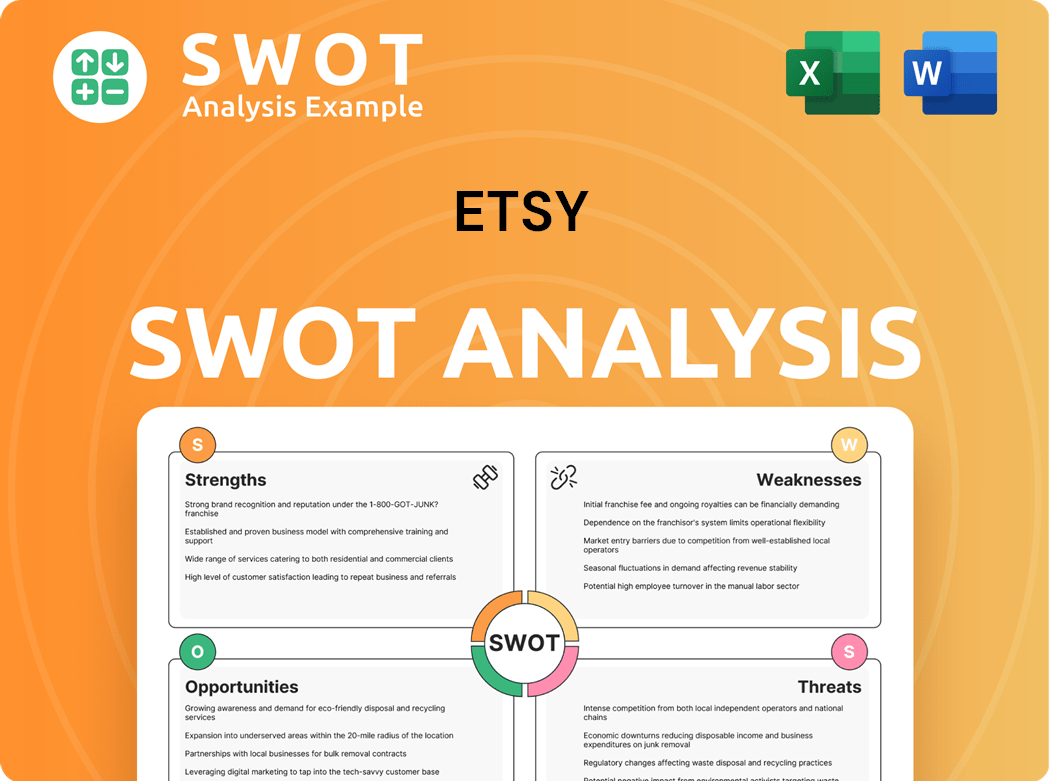
How Has Etsy’s Ownership Changed Over Time?
The ownership structure of the company underwent a major transformation with its Initial Public Offering (IPO) on April 16, 2015. The company began trading on the NASDAQ under the ticker symbol ETSY. This IPO marked a significant shift from a privately held startup to a publicly traded entity. The IPO allowed a wider array of investors to acquire shares, leading to a diversification of its ownership. The initial market capitalization reflected this transition, signifying a new phase in the company's growth and development.
As the company evolved, its ownership structure continued to change. The founders' initial stakes were diluted over time due to subsequent share offerings and their eventual departures from operational roles. Despite these shifts, the founders' original vision and the company's core values have persisted. The evolution of the ownership structure has been a key factor in shaping the company's strategic direction and its ability to adapt to market changes.
| Event | Date | Impact on Ownership |
|---|---|---|
| Initial Public Offering (IPO) | April 16, 2015 | Transitioned from private to public ownership; increased investor base. |
| Secondary Share Offerings | Ongoing | Dilution of founders' stakes; increased institutional ownership. |
| Executive Departures | Various | Shift in leadership influence; potential changes in strategic direction. |
As of early 2025, the major stakeholders in the company primarily consist of institutional investors. These include mutual funds, exchange-traded funds (ETFs), and hedge funds. Vanguard Group Inc., BlackRock Inc., and State Street Corp. are consistently among the top institutional holders of the company's stock. These large investment firms hold significant blocks of shares on behalf of their clients. The specific percentages of ownership for these institutional investors fluctuate based on their investment strategies and market conditions. These shifts in major shareholding directly impact company strategy and governance. For more insights, you can explore the Growth Strategy of Etsy.
The company's ownership structure has evolved significantly since its IPO in 2015, with institutional investors playing a major role.
- Institutional investors like Vanguard and BlackRock hold substantial shares.
- The founders' ownership has diluted over time.
- Changes in ownership influence company strategy and governance.
- The company is a publicly traded entity.
Etsy PESTLE Analysis
- Covers All 6 PESTLE Categories
- No Research Needed – Save Hours of Work
- Built by Experts, Trusted by Consultants
- Instant Download, Ready to Use
- 100% Editable, Fully Customizable
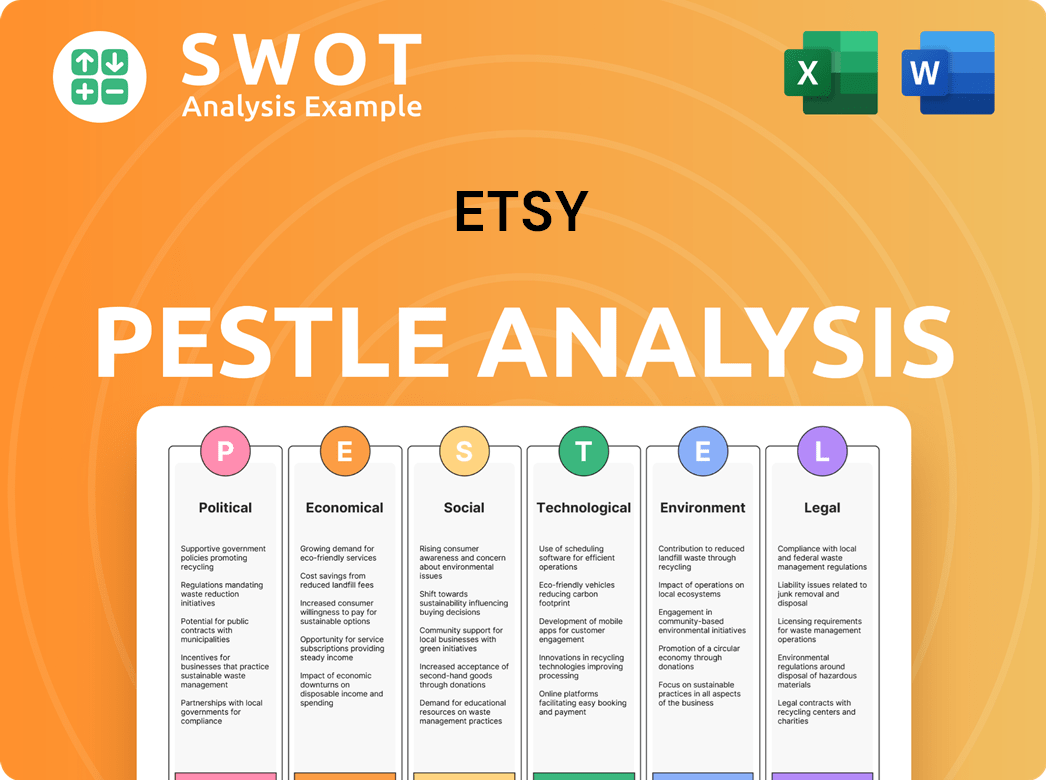
Who Sits on Etsy’s Board?
The Board of Directors at Etsy significantly influences the company's governance. As of early 2025, the board is composed of independent directors and executive directors. These individuals oversee Etsy's strategic direction, financial performance, and risk management. The board's composition and decisions are subject to scrutiny from major institutional investors and shareholder advisory groups.
The current board members are responsible for overseeing the company's strategic direction, financial performance, and risk management. The board's composition and decisions are subject to scrutiny from major institutional investors and shareholder advisory groups.
| Board Member | Title | Affiliation |
|---|---|---|
| Josh Silverman | CEO | Etsy |
| Fred Wilson | Director | Union Square Ventures |
| Debra A. Lee | Director | BET Networks |
Etsy operates with a one-share-one-vote structure. Each common share of ETSY stock entitles its holder to one vote on shareholder matters. This structure ensures shareholder influence is proportional to their equity stake. The Brief History of Etsy details the company's evolution, including its governance structure.
Etsy is a publicly traded company, and its ownership is distributed among various shareholders. The voting power is directly tied to the number of shares held.
- Etsy's board oversees strategic direction and financial performance.
- Shareholder influence is proportional to their equity stake.
- The board includes independent and executive directors.
- The company's governance structure is transparent.
Etsy Business Model Canvas
- Complete 9-Block Business Model Canvas
- Effortlessly Communicate Your Business Strategy
- Investor-Ready BMC Format
- 100% Editable and Customizable
- Clear and Structured Layout
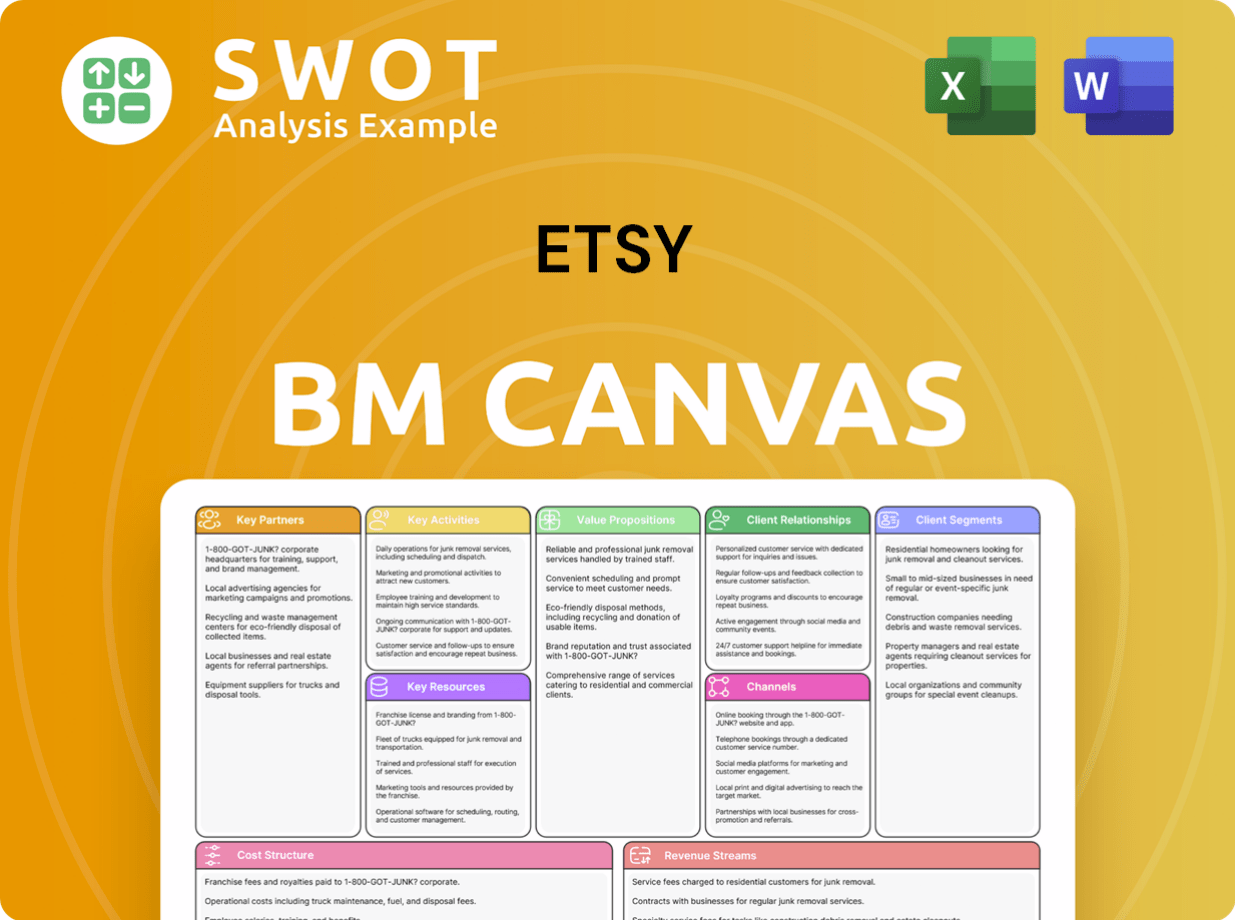
What Recent Changes Have Shaped Etsy’s Ownership Landscape?
Over the past three to five years (2022-2025), the ownership of the company has seen continuous evolution. This is primarily driven by market dynamics and ongoing investment activity. Share buybacks have been a strategy employed to return value to shareholders. It also potentially reduces the number of outstanding shares, thereby increasing earnings per share. The company consistently attracts and retains institutional investment.
Leadership changes, including departures from operational roles, have shifted the focus of ownership influence. This shift is from individual founders to a broader base of institutional investors and the executive management team. Industry trends in ownership structure, such as the increasing dominance of institutional ownership, are reflected in the shareholder base. This trend often leads to greater scrutiny on corporate governance and financial performance. Large investors prioritize consistent returns and sustainable growth. Further insights into the marketing strategy of Etsy can provide additional context.
As of early 2024, institutional investors held a significant portion of the company's shares. This reflects a broader trend of institutional ownership in the tech and e-commerce sectors. The company's market capitalization, which fluctuates with its stock price, is a key indicator of its overall value and attractiveness to investors. Financial performance, including revenue growth and profitability, remains a central focus for these institutional investors. The company's headquarters are located in Brooklyn, New York.
The company is a publicly traded company. Its stock is available on the Nasdaq. The company's ownership structure is primarily composed of institutional investors and a smaller percentage of shares held by individual investors and company insiders.
The major shareholders are predominantly institutional investors. These include investment firms and mutual fund companies. The company's CEO, and other members of the executive team, also hold shares, but the majority is held by institutional investors.
Etsy Porter's Five Forces Analysis
- Covers All 5 Competitive Forces in Detail
- Structured for Consultants, Students, and Founders
- 100% Editable in Microsoft Word & Excel
- Instant Digital Download – Use Immediately
- Compatible with Mac & PC – Fully Unlocked
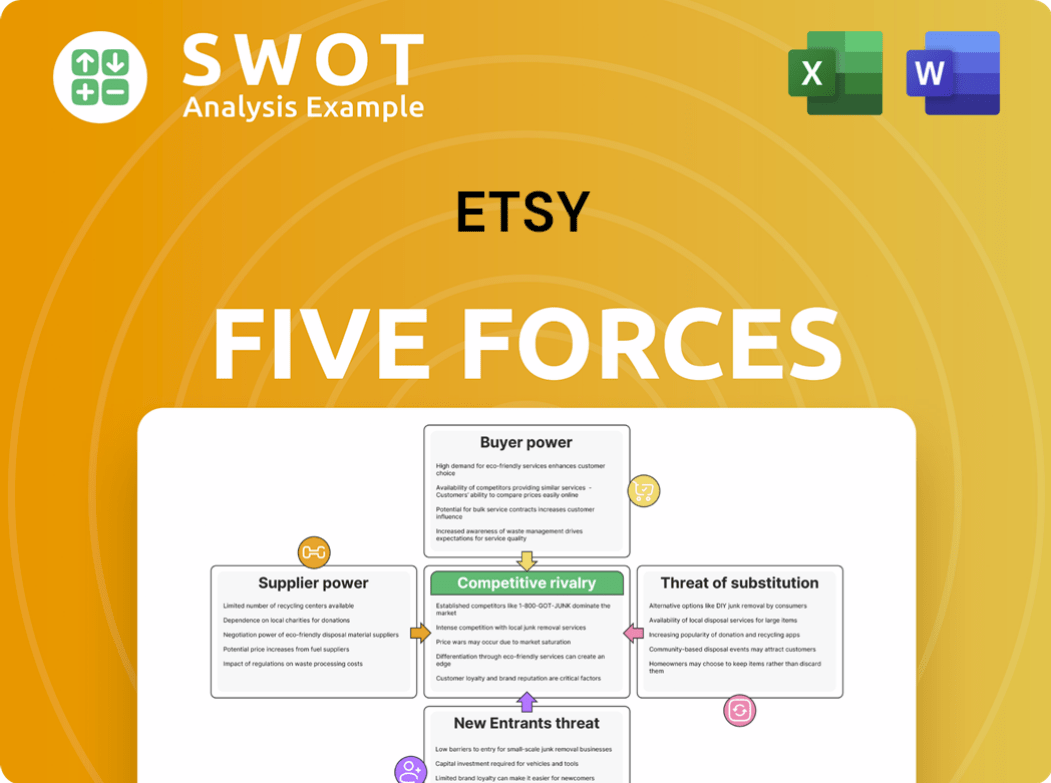
Related Blogs
- What are Mission Vision & Core Values of Etsy Company?
- What is Competitive Landscape of Etsy Company?
- What is Growth Strategy and Future Prospects of Etsy Company?
- How Does Etsy Company Work?
- What is Sales and Marketing Strategy of Etsy Company?
- What is Brief History of Etsy Company?
- What is Customer Demographics and Target Market of Etsy Company?
Disclaimer
All information, articles, and product details provided on this website are for general informational and educational purposes only. We do not claim any ownership over, nor do we intend to infringe upon, any trademarks, copyrights, logos, brand names, or other intellectual property mentioned or depicted on this site. Such intellectual property remains the property of its respective owners, and any references here are made solely for identification or informational purposes, without implying any affiliation, endorsement, or partnership.
We make no representations or warranties, express or implied, regarding the accuracy, completeness, or suitability of any content or products presented. Nothing on this website should be construed as legal, tax, investment, financial, medical, or other professional advice. In addition, no part of this site—including articles or product references—constitutes a solicitation, recommendation, endorsement, advertisement, or offer to buy or sell any securities, franchises, or other financial instruments, particularly in jurisdictions where such activity would be unlawful.
All content is of a general nature and may not address the specific circumstances of any individual or entity. It is not a substitute for professional advice or services. Any actions you take based on the information provided here are strictly at your own risk. You accept full responsibility for any decisions or outcomes arising from your use of this website and agree to release us from any liability in connection with your use of, or reliance upon, the content or products found herein.